Quantitative factor investing has taken over the stock markets, with “smart beta” and ETFs as low-cost options to invest based on algorithms. Real estate is a notoriously low-turn, slow industry in comparison that historically required investors to talk with real estate brokers to just get a sense of listings or inventory in an area. However, with turnkey real estate platform’s such as Roofstock, investors can now choose the location of their properties without even having to visit.
Real estate has seen a massive bull market over the past decade, fueled by US prosperity, population expansion, and a low-interest rate environment. With the localization constraint on real estate taken away, buyers can now purchase properties in areas in which they believe will outperform the general real estate market. Similar to stock security selection we can take the same framework to determine which markets we would like to invest in.
Roofstock as a platform
First, let’s take a look at the cities with inventory on Rootstock and then we will determine the best MSA’s (Metropolitan Statistical Area’s) for our investment needs.
Indianapolis, Jacksonville, Memphis, Birmingham, and St. Louis are the top five cities in which Roofstock has inventory. We will examine these cities further with the idea that we can extend our framework to a larger universe as more houses are added.
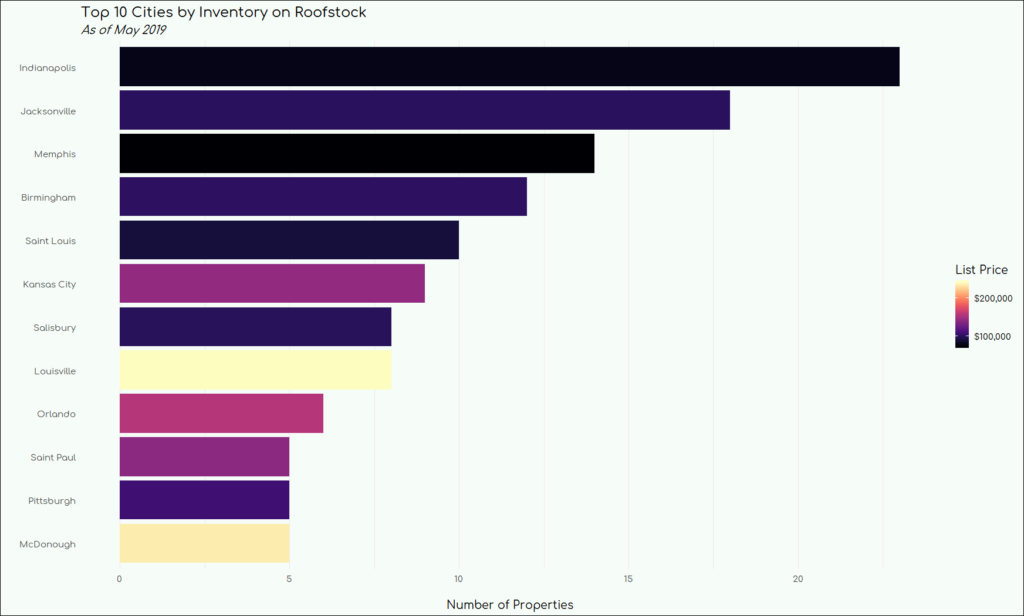
Inventory
Where do these properties fall relative to what else is on the market? Looking at the current listings of single family homes (from realtor.com) in the same zipcodes as the Roofstock properties and grouped then by cities. I have added Houston, Pittsburgh, and Atlanta because those cities are of particular interest to me. The distributions of the home prices in the various cities are diverse. Cities like Atlanta, Houston, and Pittsburgh have somewhat normal distributions, while others, such as Indianapolis, Birmingham, and Saint Louis show bimodal distributions. Possibly there are distinct areas of town in these smaller Metropolitan cities (such as the right side and wrong side of the tracks).
It is also clear that the Roofstock properties in Houston and Birmingham are on the lower ends of the distributions.

Housing Prices and Population Growth
The demand side of housing prices is the population growth of a city. Other factors that will affect the price of single-family homes include the income per capita and employment. We can use these factor from a macro level to determine which cities look interesting from an investment standpoint.
Housing prices are clearly impacted by population growth with an r-squared of 0.35, while each 1% change in the MSA population is associated with a 2.2% change in the housing price of that area.
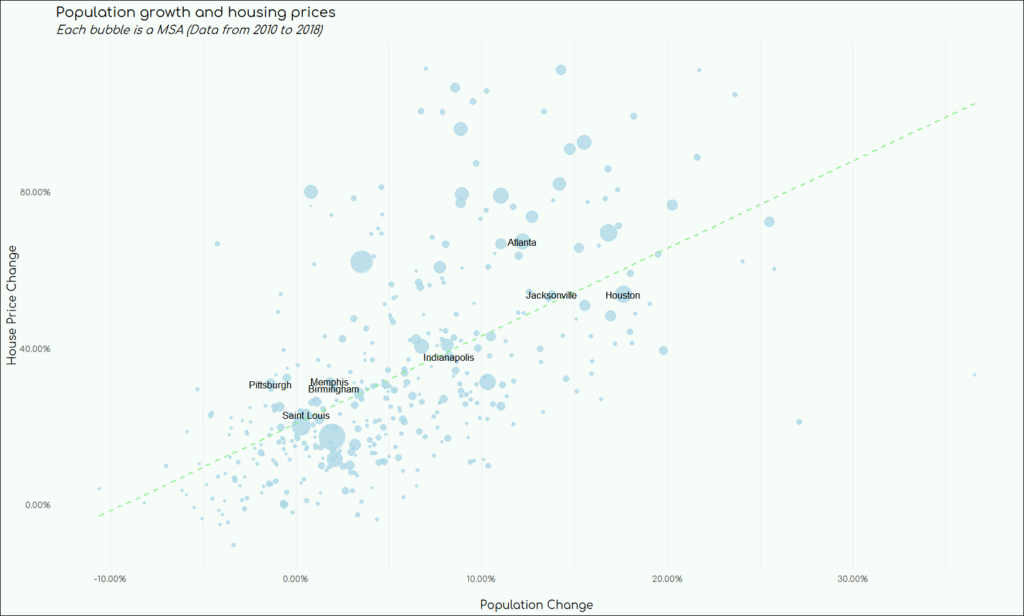
To determine whether or not population growth is predictive, the 383 MSA’s were divided into two buckets, where the “top” bucket was the fastest growing cities from 2010-2014, while the “bottom” bucket is the slowest growing cities. Then when we look at the population growth from 2015-2018 and we see that the “top” bucket outgrew the “bottom” bucket by 5%, showing that momentum in the last bull market was predictive. From there, of the cities I am evaluating, Houston, Jacksonville, and Atlanta fit the criteria of homes with above average growth rates.
Income per Capita
Another factor in housing prices will be the wealth of the individuals within that city. San Francisco, is a great example of a landlocked city, with rising incomes, leading to a surge in housing prices. Of the cities being evaluated, only Atlanta has had above average income per capita growth since 2010. Houston is a unique case to be aware of also, as the economy is still driven by the oil and gas sector while being less so correlated with the overall US economy.
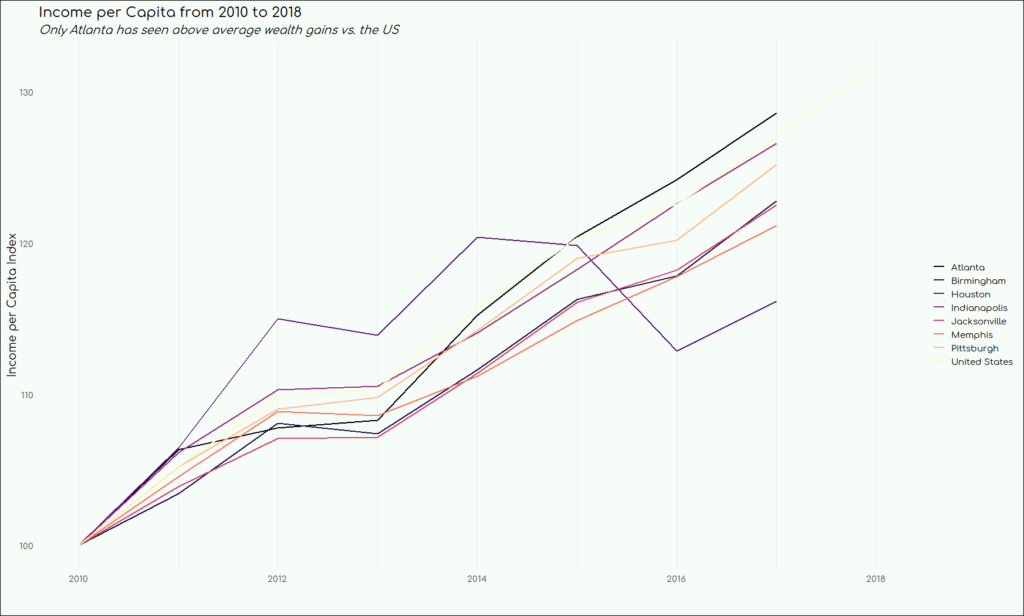
Employment Growth
The job growth within the various cities also gives an indicator of the health of those economies. Atlanta and Jacksonville have shown higher than average year over year employment growth, while Pittsburgh, St. Louis, and Memphis showing below average growth.
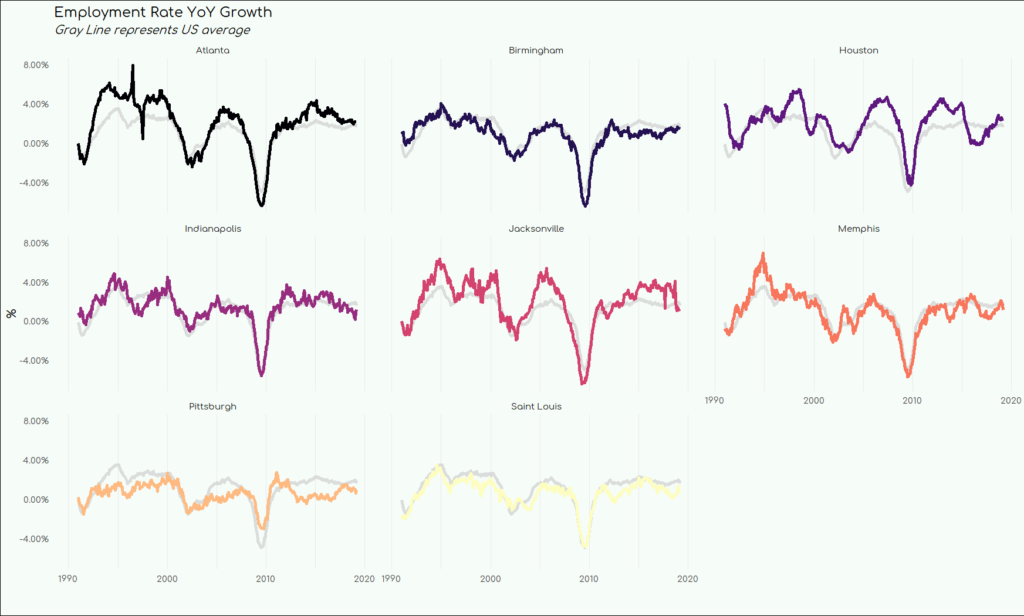
Cities to Invest
From the factors of population growth, income per capita growth, and employment growth, Jacksonville and Atlanta seem stick out as investments that could potentially outperform the broader real estate market in the medium to long term.
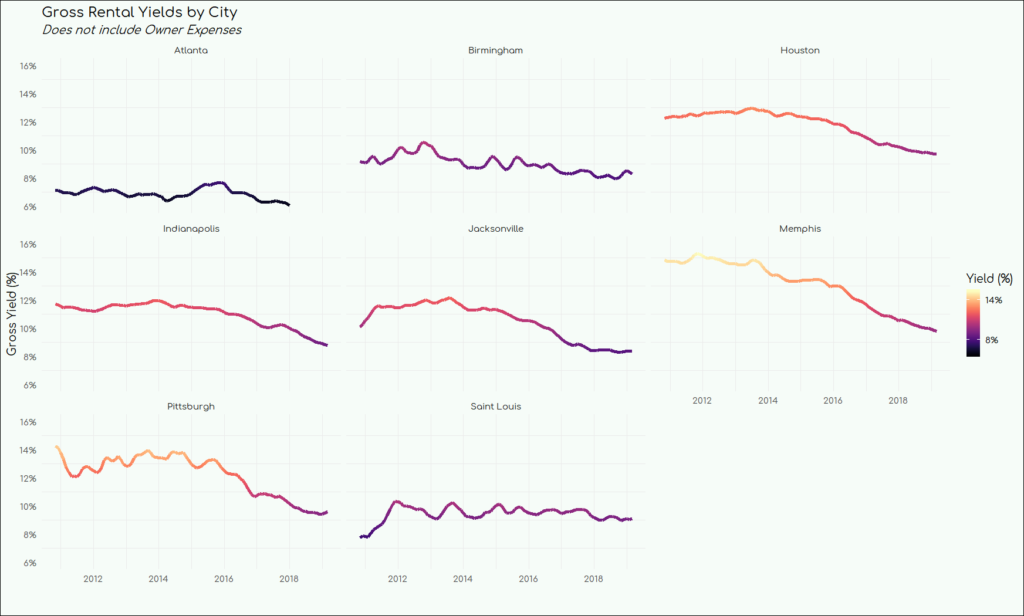
Looking at the relative prices of the various MSA’s, Atlanta offers the lowest yield (meaning it is the most expensive for someone looking for cash flow). Jacksonville offers a bit better yield and seems like a market poised for growth relative to the other cities in this study.
Now there are currently 18 properties within the Jacksonville market that we will be able to look into.
This is a cursory look at factor’s that can drive real estate prices. As the transactions become more seamless thanks to platforms like Roofstock, quantitative investing in this space will become more important. This study could obviously be expanded nationwide and also include city factors such as the aging of the population, migration factors, inventory, and new construction permits.
